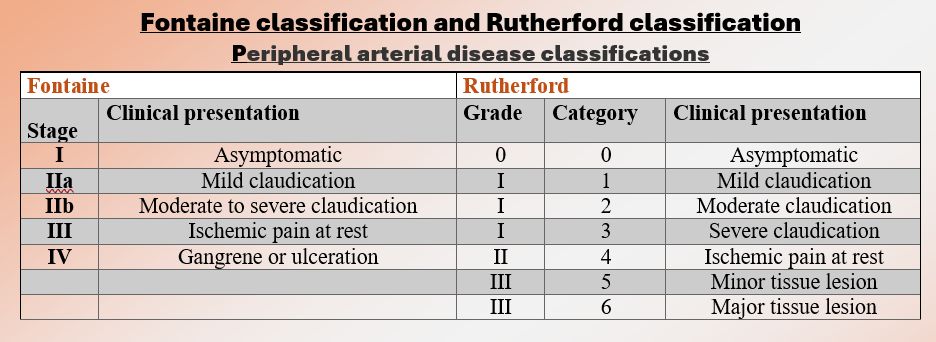Endovascular recanalization of peripheral arterial occlusive disease (PAOD) is a minimally invasive surgery that reopens blocked or restricted arteries in the peripheral vascular system. PAOD typically affects the arteries that provide blood to the legs, resulting in symptoms such as leg pain, cramps, numbness, or paralysis, especially during vigorous exercise. Severe cases can cause tissue damage and possibly limb loss if not treated..
WIFi Classification
Fontaine classification and Rutherford classification
Available techniques
- Conventional balloon angioplasty
- Drug eluting balloon angioplasty
- Stent-assisted angioplasty
- Drug-eluting stent-assisted angioplasty
Access: all options available: transfemoral/transbrachial/transpedal/retrograde/antegrade
Arteries
- Aortoiliac arteries
- Femoropopliteal arteries
- Cruropedal arteries
Patients suffering from
- Diabetic foot ulcers with/without rest pain
- Non-diabetic foot ulcers with/without rest pain
- Intermittent claudication
Supportive medical treatments
- Treatments need usually local anesthesia at the puncture site only
- General analgesia and sedation if asked for
- Wound care if necessary
- Comprehensive conservative/medical treatment of vascular diseases and diabetes
Further options
- Check-up of coronary arteries and brain supplying arteries
- Check-up of vascular risk factors
Options for patients with peripheral arterial disease suffering from intermittent claudication, foot ulcers/rest pain with or without diabetes including diabetic foot syndrome
Checklist
- Give short description of patient`s symptoms: intermittent claudication, pain free walking distance, rest pain, foot ulcers
- Indicate duration of symptoms
- Indicate laboratory values : Concerning renal function, thyroid gland function, blood coagulation
- Indicate body mass index (BMI)
- Indicate current medications
- Indicate prior treatments :vascular surgery, endovascular/interventional treatments
- Indicate significant comorbidities:diabetes mellitus, coronary artery and cerebrovascular disease, oncological disease, other serious disease
- Indicate if imaging of vascular disease has been performed :by Duplex sonography, CT-Angiography or MR-Angiography
- If yes, please transfer images via safe internet route or by sending a CD





